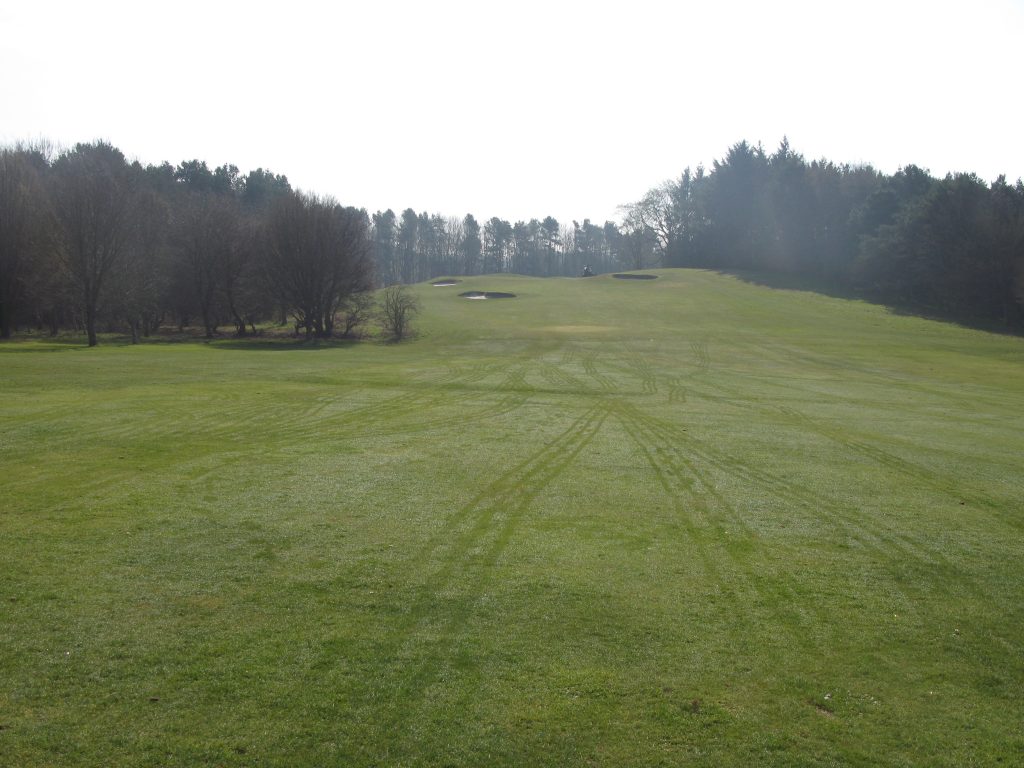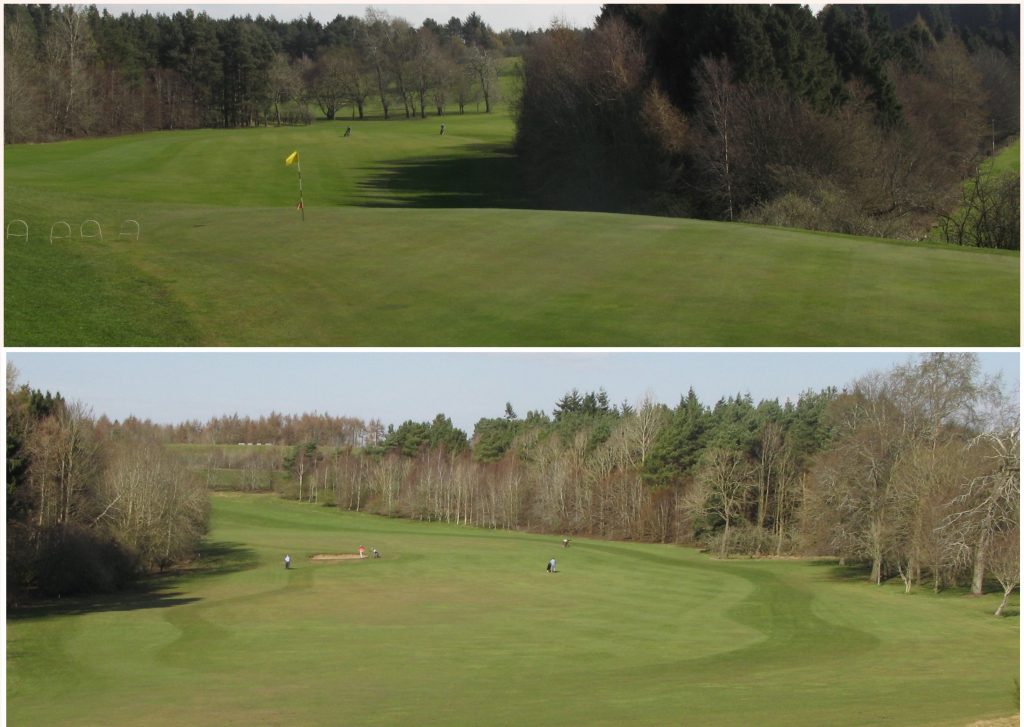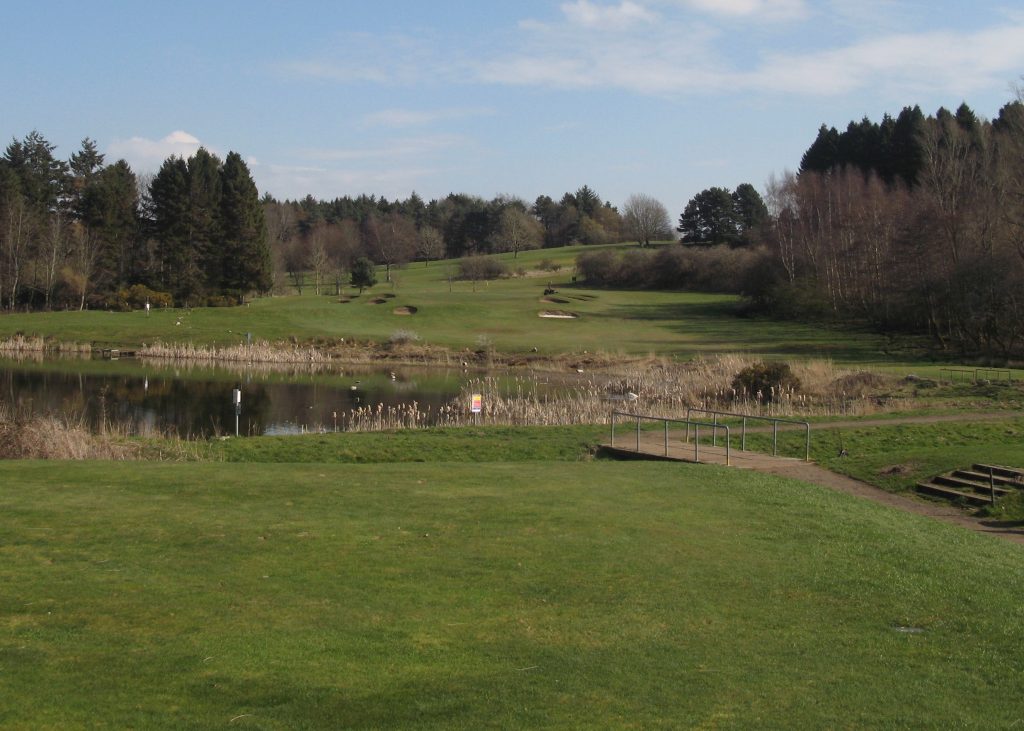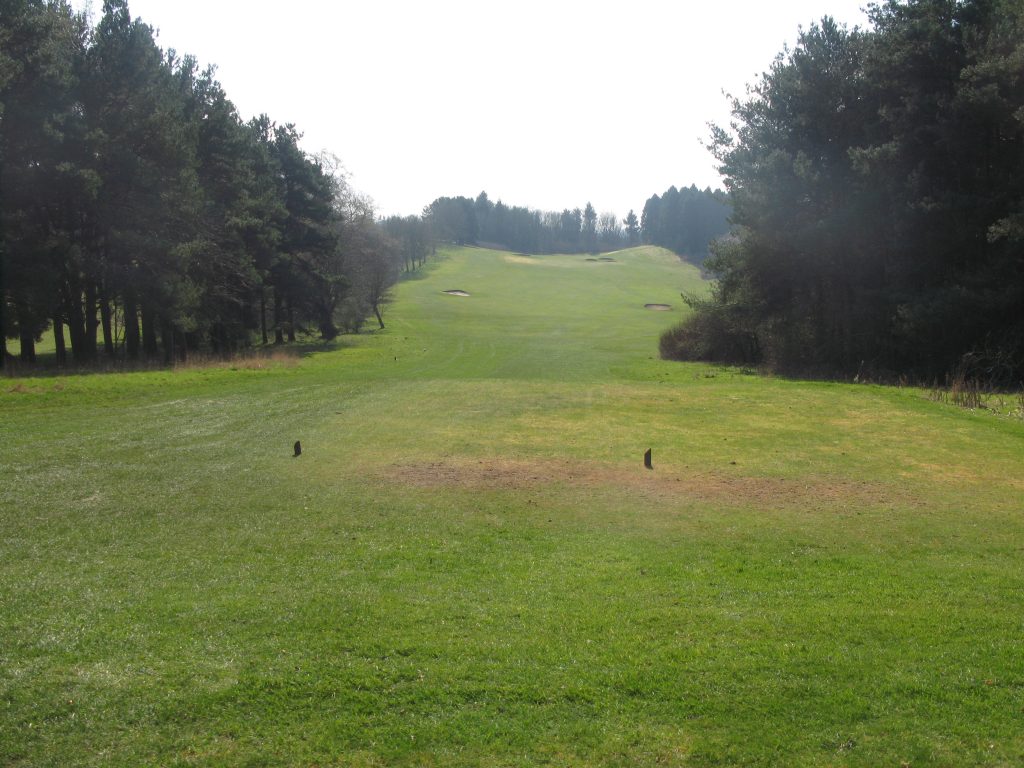Forget the industrial surround to experience Scottish golfing value at its best
Round £15. Par 70. Course Rating / Slope Rating (yellow) 69/121. Value (out of 5) – 5
As long as courses like Grangemouth remain open and accessible, Scotland will easily retain its lead in providing the best value golf worldwide. At only £10 for a ‘winter round’ or £15 for summer, this is as good value golf as you can get.
But Grangemouth Golf Club and it’s courses, have not always had a guaranteed existence and the Scottish golfing community can’t take venues like Grangemouth for granted – its history is worth dwelling on.
The current parkland municipal course, opened in 1974 by the local council, is just outside the village of Polmont and close to junction 4 of the M9 motorway. However, the first Grangemouth golf course can be traced back to the mid 1890s, and its growth and decline are charted on the excellent web site “Forgotten Greens of Scotland”. After a few false starts, a 9 hole course opened in 1908 at Abottsgrange, including greens created through “beating, rolling, sanding, cutting”. A “small shelter was built to protect against the ‘Sudden Blast'”. Initially there were 113 men and 67 lady members, highlighting the non sexist nature of golf in Scotland. A clubhouse was soon built but burned down in 1924, with the most informative comment being the sad loss of 200 sets of clubs, “only those few who took clubs away at the weekend were saved”.
By the early 1950s the course, now with 18 holes, became a victim of a mix of expanding urban growth, the building of a new Scottish Central airfield and political wrangling within Stirling County and the local Town councils. This led to the closure of that course in 1954, now the sight of a school and housing estate, with the political promise of a new replacement course on Polmonthill. It was finally established 30 years later! Politics.
Arguably, the current course was worth the wait. At well over 6000 yards, this undulating layout, bordering Polmont Woods, is very challenging. When I played, on a fine March day, along with my old friend Frank Crowe and two of his friends, Colin Campbell (a local member) and Ian Ponton, it was in remarkable condition. It beggared belief that it is maintained by only two greenkeepers; the greens were first class.
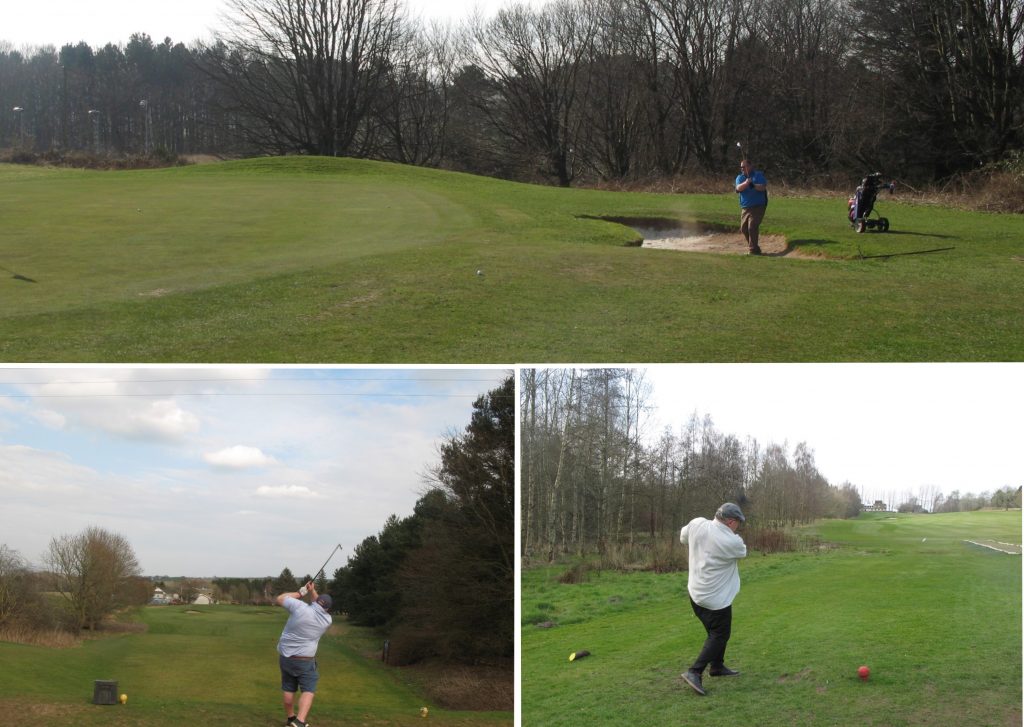
Top – Ian Ponton at the 2nd; Bottom left Colin at the 15th; Frank at the 18th.
The course has won a “Scottish Municipal Course of the Year” award in the past, and you could see why. The bunkers, where admittedly more rakes were needed, and tees, could have been a bit sprucer; but this was golf costing about the same as two pints of beer, with high summer rates still being well short of £20. If any international tourists wanted to see what is on offer elsewhere in Scotland, other than the heady courses in nearby Fife or East Lothian costing over 10 times the green fee, this would be a great course to play.
There are some memorable holes, not least the brilliantly framed par fours first and fourth holes, both played uphill into well bunkered greens. The signature hole, “Reflections”, the par three seventh at 178 yards, played over a resevoir, left me ‘reflecting’ how I racked up a 7, including my first ball finding the water.
The greens were very tricky, as my seven 3 putts attest; this was due to the large and sloping nature of them, not the surfaces which were true. My gross 90, therefore, indicting my otherwise decent ball striking.
The overall layout has a nice variety of dog leg holes, blind shots, and some easier respite holes to catch the odd birdie or par. The four par 3s, collectively, are the course highlight for me.
It is worth getting ready for the industrial views of the refinery, which only comes into view on a few holes, most notably at the 11th and 12th. Also nearby is one of the largest land fill sites in Scotland, but local member Colin commented that there was never any impact from smells. I would not let the local industrial surround put you off playing Grangemouth, it’s actually a reason to go.
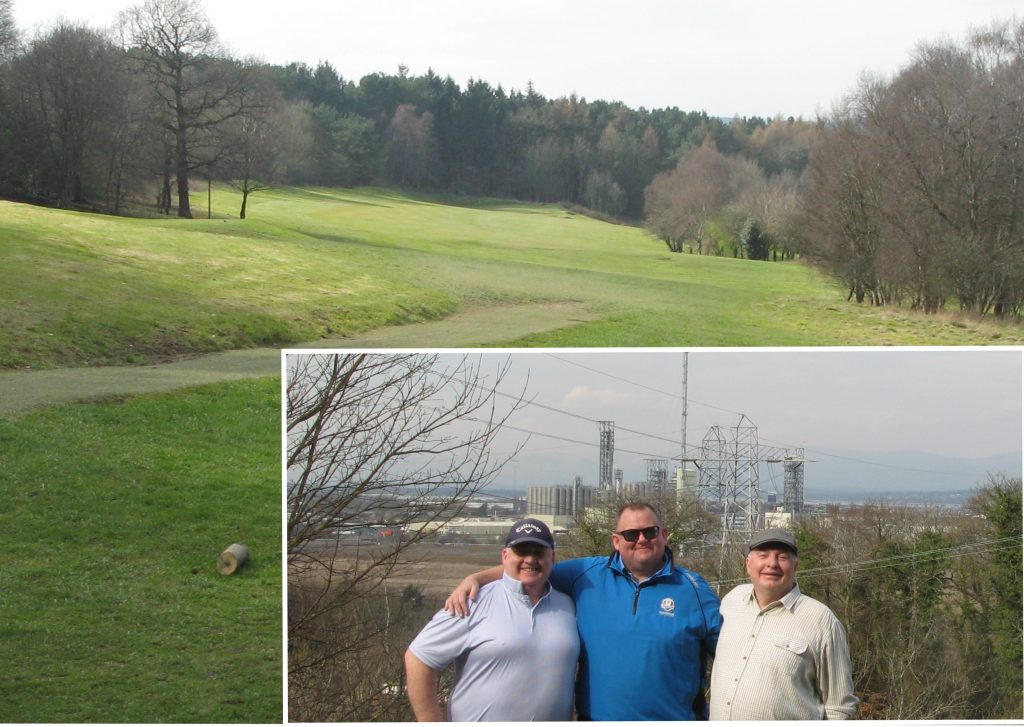
The course, laid out as 4 loops of holes, makes it easy to just play a few holes, or cut out some of the track. As I was leaving, I saw a local member, taking advantage by jumping onto the back nine. He was a old guy, in jeans and t-shirt, whose clubs looked like they could have survived the 1924 fire. “Could be the Algarve” I said, commenting on the unseasonal weather. “Aye, yer right, ma five pals have gone tae Turkey and its pissing down and four o’ them have caught that ‘covee’, ****ing brilliant eh!”
Frank and I, played Colin and Ian, in a tightly contested four ball game that went to the last. Well played everyone, a memorable day’s golf on one of the finest municipal courses in the world. Now that is “****ing brilliant”.
Play Grangemouth. Its currently going through a change from municipal to private management, so you never know how long it might be there.
Course Type: Parkland
Par 70 (2 par 5s, 12 par 4s, 4 par 3s)
Distance: 6077 (yellow)
Moly’s Gross score: 90
